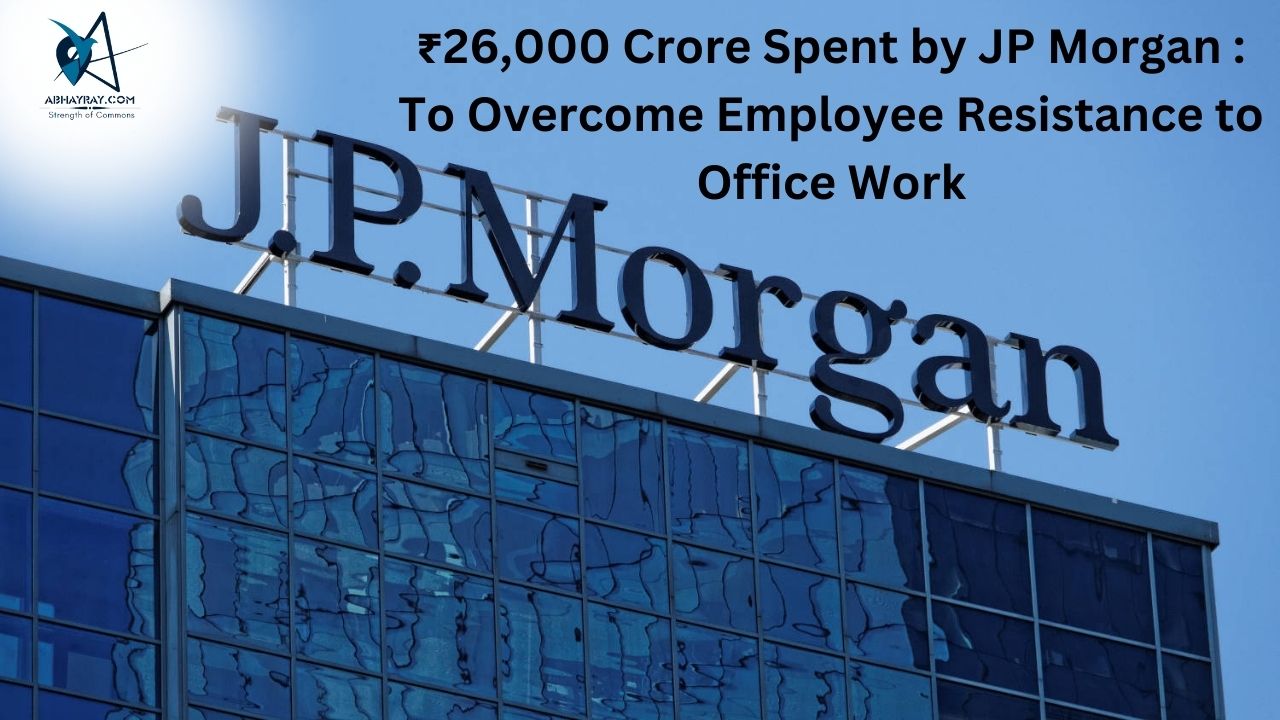Introduction
JPMorgan Chase, the world’s largest bank, recently made headlines for a bold move that highlights its resilience in the face of shifting workplace dynamics. Following a period of resistance from employees to the company’s mandate requiring a return to the office after the COVID-19 pandemic, JPMorgan Chase refused to relent. Instead of continuing with remote work or offering further flexibility, the company chose to invest heavily in a stunning new headquarters. This 423-meter skyscraper, located at 270 Park Avenue in Manhattan, is a true testament to the bank’s commitment to reshaping its physical workspaces in a way that combines cutting-edge architecture, environmental sustainability, and a strategic vision for the future.
A State-of-the-Art Building with Modern Architecture
Designed by the renowned architectural firm, Foster + Partners, the new JPMorgan Chase headquarters is a beacon of modern design. Standing tall at 423 meters, it has become the tallest office building in New York City’s Midtown East neighborhood, adding a distinctive silhouette to the city’s skyline. Spanning an entire city block, the building serves not only as a physical structure but also as a symbol of the bank’s determination to bring employees back to the office environment in a post-pandemic world.
The project represents a massive investment, with a reported construction cost of $3 billion (approximately ₹26,000 crore), underscoring JPMorgan Chase’s long-term commitment to urban renewal and employee engagement. The design focuses on openness and transparency, featuring an impressive glass exterior that invites natural light into the vast office spaces. The building’s architectural style blends sleek, minimalist aesthetics with the advanced engineering necessary to support the needs of a global financial powerhouse.
Foster + Partners, led by Sir Norman Foster, is a prestigious architectural firm known for its work on high-profile projects worldwide, including the design of the British Museum’s Great Court and the Apple Park headquarters in Cupertino, California. For JPMorgan Chase’s new headquarters, the firm has crafted a space that emphasizes flexibility, modernity, and comfort. The building’s floors are designed to accommodate large, open-plan office spaces, while also providing the flexibility for specialized work areas and smaller, private offices. In addition to these office spaces, the building includes multiple floors dedicated to amenities such as cafes, lounges, and meeting rooms, all aimed at enhancing employee satisfaction and collaboration.
A Focus on Sustainability and Innovation
The headquarters not only sets new standards for architectural excellence, but it also embraces eco-friendly features. The building has been designed with sustainability in mind and is expected to earn a high rating under the LEED (Leadership in Energy and Environmental Design) certification system. JPMorgan Chase’s new headquarters is built to consume less energy, reduce waste, and conserve water compared to traditional office buildings, making it a vital step in the company’s ongoing commitment to reducing its carbon footprint.
Energy-efficient technologies are integrated throughout the building, including smart HVAC systems, advanced insulation, and the use of renewable energy sources. The building’s construction has been designed to minimize its environmental impact, both during its construction phase and throughout its operational life. The building’s glass façade helps regulate internal temperatures by allowing natural light to enter while maintaining the necessary insulation. The lush green spaces incorporated into the design, including terraces and outdoor gardens, are intended to improve both employee well-being and air quality in the surrounding urban area.
Moreover, the building is fully equipped with the latest in digital technology, creating a seamless experience for both employees and visitors. High-speed elevators, automated systems, and interactive workspaces enhance efficiency and productivity, ensuring that JPMorgan Chase’s headquarters stands as a beacon of technological advancement within the corporate world.
Historical Significance of the Site
While the new JPMorgan Chase headquarters is undoubtedly an architectural marvel and a major milestone for the bank, the site on which it stands has historical significance, adding an extra layer of intrigue to the development.The new building replaces the Union Carbide Building, a structure with a controversial history. The Union Carbide Building, which was completed in the mid-20th century, stood as a symbol of corporate power for decades. However, the company’s association with the infamous Bhopal Gas Tragedy in India, one of the worst industrial disasters in history, cast a dark shadow over the building’s legacy. In December 1984, a gas leak at a Union Carbide pesticide plant in Bhopal led to the deaths of thousands of people and affected countless others, leaving a permanent scar on the company’s reputation.
In 2019, after being vacated by Union Carbide’s parent company, Dow Chemical, the building was demolished. At the time of its demolition, the Union Carbide Building was the tallest structure ever voluntarily taken down in New York City, at a height of 216 meters. The demolition made way for the new JPMorgan Chase headquarters, which, while acknowledging the building’s complex history, represents a fresh start in terms of design, function, and corporate ambition.
Despite the controversial past of the Union Carbide Building, JPMorgan Chase’s decision to construct a new building on this site can be seen as an attempt to revitalize the space and turn it into a symbol of progress and renewal. The new headquarters, with its modern design and focus on sustainability, serves as a stark contrast to the legacy of industrial tragedy associated with the former building.
A Strategic Move for the Future
The decision to build a brand-new headquarters rather than settle for remote work or opt for a smaller office footprint reflects JPMorgan Chase’s belief in the importance of in-person collaboration and a centralized office culture. As the world continues to navigate the challenges of a post-pandemic economy, many companies have embraced remote or hybrid work models. However, JPMorgan Chase has opted to double down on its physical presence, using its new headquarters as a tool to lure employees back to the office.
By investing in such an iconic building, the company not only aims to improve employee engagement and productivity but also signals its ongoing commitment to New York City as a global financial hub. The headquarters serves as a centerpiece of JPMorgan Chase’s efforts to adapt to a changing world while staying rooted in its history as a financial leader.
Conclusion
JPMorgan Chase’s new headquarters at 270 Park Avenue stands as a monumental symbol of innovation, resilience, and corporate ambition. With its breathtaking design, commitment to sustainability, and location on a historically significant site, the building is more than just an office—it’s a statement about the bank’s future. As it rises high above Manhattan’s skyline, it is clear that JPMorgan Chase is looking toward a new era, one where tradition and modernity can coexist to shape the future of work.
GMICapitals.com RaysVeda.com GetMyStartup.com LawCanal.com GetMyIndia.com ZinCob.com Angeltors.com

